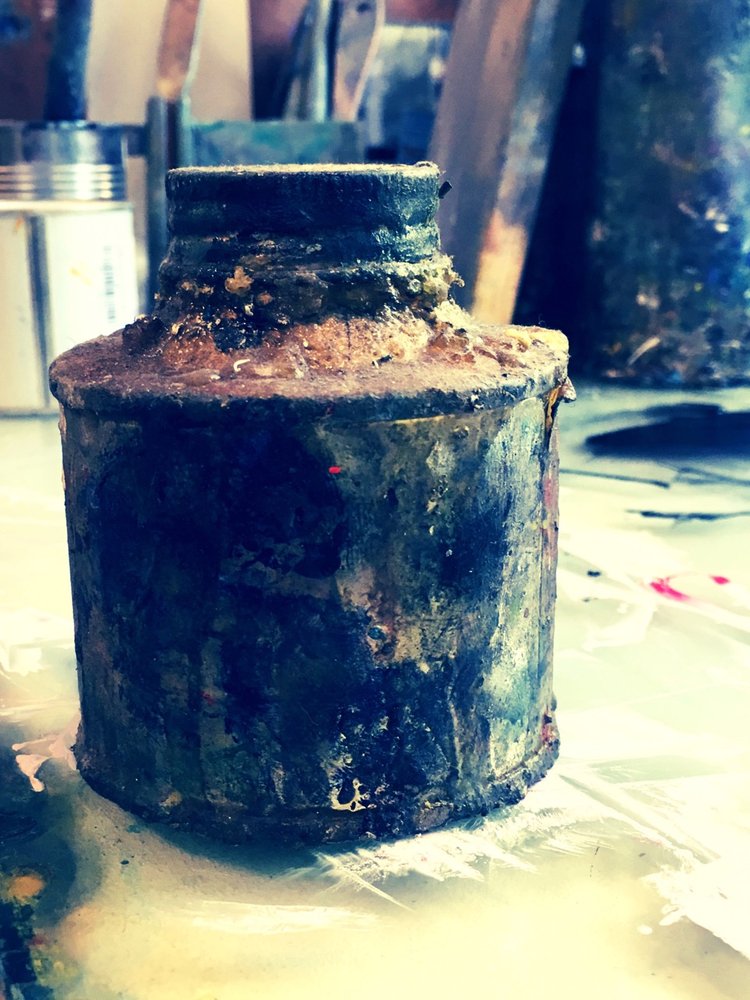Thirty-Six Views of Newland Island:
Exploring repetition and difference
“Art does not imitate, above all because it repeats; it repeats all the repetitions, by virtue of an internal power -an imitation is a copy, but art is simulation, it reverses copies into simulacra”.
Gilles Deleuze [1925-95]
It is now a century since the master potters Bernard Leach [1887-1979] and Hamada Shōji 濱田 庄司,[1894-1978] constructed their climbing kiln [Noborigama 登り窯] in the outskirts of the small Cornish coastal town of St Ives. In doing so they had begun a, perhaps unlikely, cultural relationship between Cornwall and Japan that lasted throughout their lives. This was a collaboration of ideas, craft and sensibility that effortlessly bridged the 6000 miles that otherwise separate these two “island nations”.
“Thirty-Six Views of Newland Island” not only draws on my own time spent living in Japan, and my interest in its complex aesthetic traditions, but it also seeks to add reinforcement to the bridge begun by Leach and Hamada.
View 9
Polaroid 109.36
[Details of works at the bottom of the page.]
View 1
Extracts from essay “Thirty-Six Views of Newland Island” JSH [2022]:
Although the North Cornwall coast and moors… are the starting points for much of my work I have chosen Newland Island as the particular focal point for this project, titled “Thirty-Six Views of Newland Island”. This is in part an homage to the renowned Japanese artist Katsushika Hokusai 葛飾 北斎 [1760–1849] who, in the 1830's, produced a sequence of images titled “Thirty-Six Views of Mount Fuji”, but it is rather more about treading a similar path to Hokusai, and exploring some of the same universal ontological concepts that I believe informed his later work…..
Geological Map of Pentire Peninsula (with Newland Island), North Cornwall, UK. Coordinates 50.584°N 4.919°W
Polaroid 102.36
On Polaroid:
Polaroid film is, in part, a cipher for my abiding interest in the spontaneous, unrepeatable outcomes of analogue processes. The essential nature of Polaroid photographs resides in their freedom from the algorithmic intervention and post-production manipulation that are key characteristics of digital photography. A moment after framing the image, and pressing the shutter release, the Polaroid photograph is there, as an object; it has a physical, imperfect and, like any artefact, an impermanent presence.
The paintings that comprise this project are not of the Polaroid photographs. The photographs are not source material or direct references for the paintings but are, instead, views in their own right. Many of these photographs were taken using time-expired SX-70 film stock creating images that are unpredictable and rather elusive. They are images that Gilles Deleuze might have described as de-territorialized; they are improvisations around a theme.
In Polaroid photography, as in painting, the final image is a collaboration between practitioner and materials. Although the process can be repeated, the outcome, like a painting, like memories, can never be exactly replicated. I see this as part of a bigger conversation about the roles and relative merits of digital and analogue processes in the field of creativity.
Detail from View 15 (Kajikazawa in Kai Province) of Hokusai’s “Thirty-Six Views of Mount Fuji”
Edgar Degas [1834-1917] said of Hokusai: “[he] is not just one artist among others in the floating world. He is an island, a continent, a whole world in himself”.
…The relationship between man and the natural world has become rather distanced by our increasing reliance on technology and the insulating effects of ever greater urbanisation. It would seem to me that Hokusai's mission to take ukiyo-e (paintings from the floating world) out of the urban environment and to affirm or reaffirm the relationship between man and landscape (in the broadest definition of the term) is not only unfinished, but all the more important. Painting still has a significant contribution to make to this mission…
..Where Hokusai chose Fuji for his project I have chosen Newland Island as the cipher through which to explore concepts of time, permanence and change. Where Fuji is a grand, iconic landmark, universally recognisable from the merest glimpse, Newland Island is rather harder to discern and anonymous to all but a few. Where Fuji’s significance has been handed down, imposed, even, on the collective imagination, Newland Island’s anonymity and modesty liberate it from the constraints of preconception….
Newland Island (with fishing boat) from Pentire Point
Our life in this world-
to what shall I compare it?
It is like a boat
rowing out at break of day
leaving not a trace behind.
Sami Mansei circa 720
[Sami Mansei 沙弥満誓 “novice mansei”, Japanese Buddhist priest and poet]






